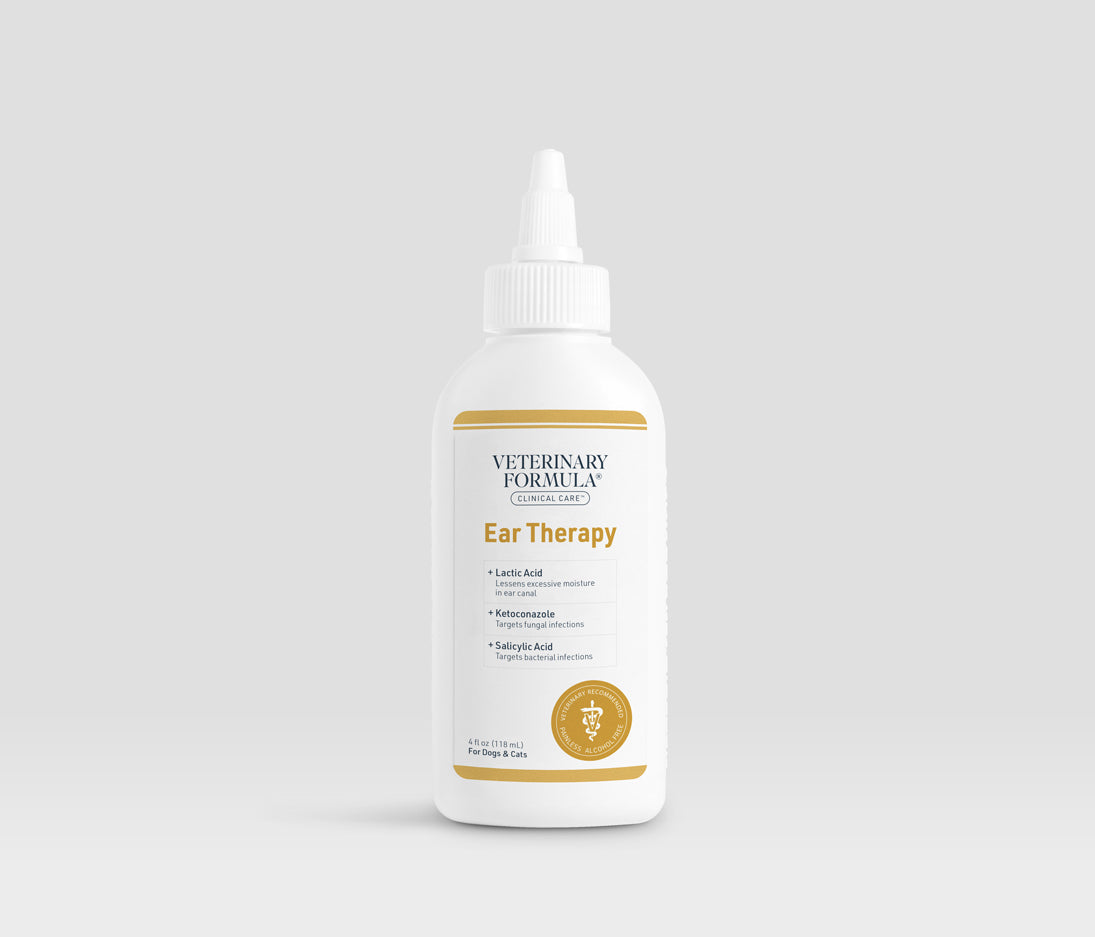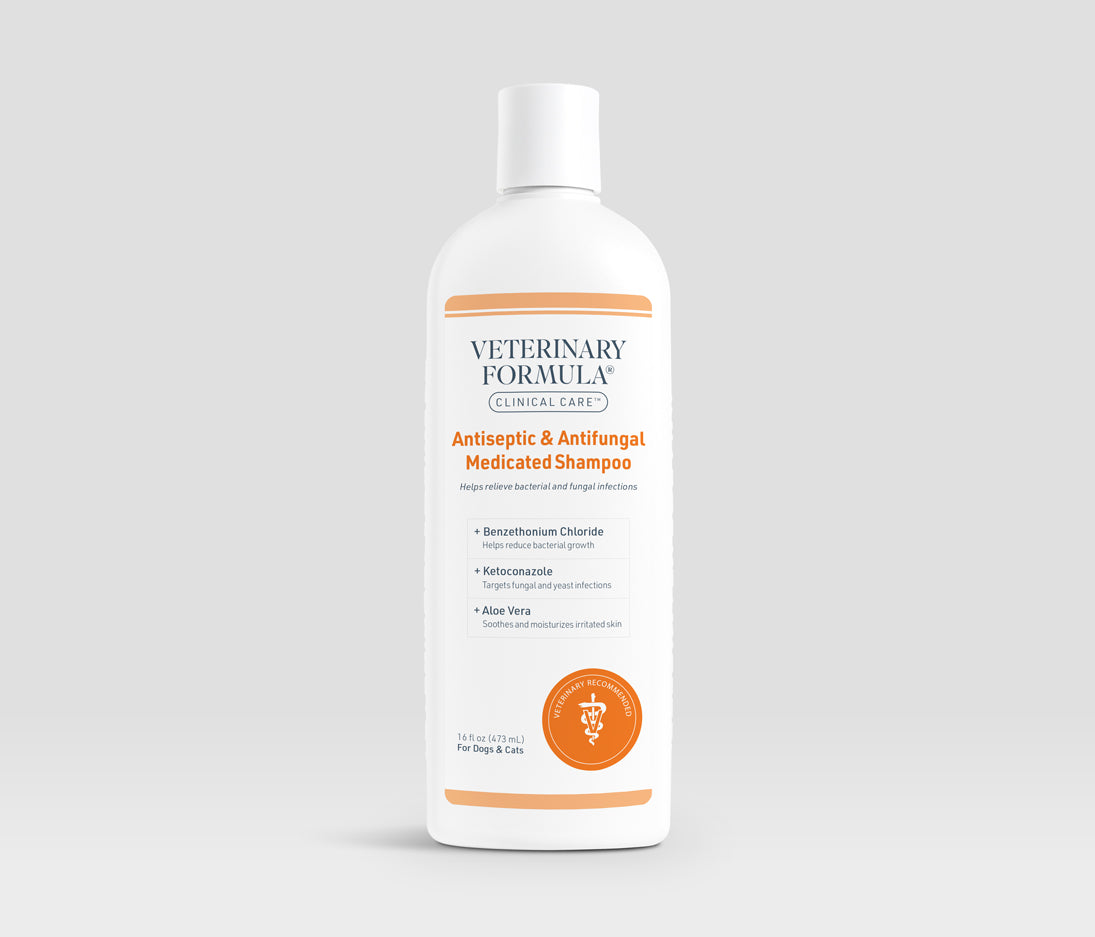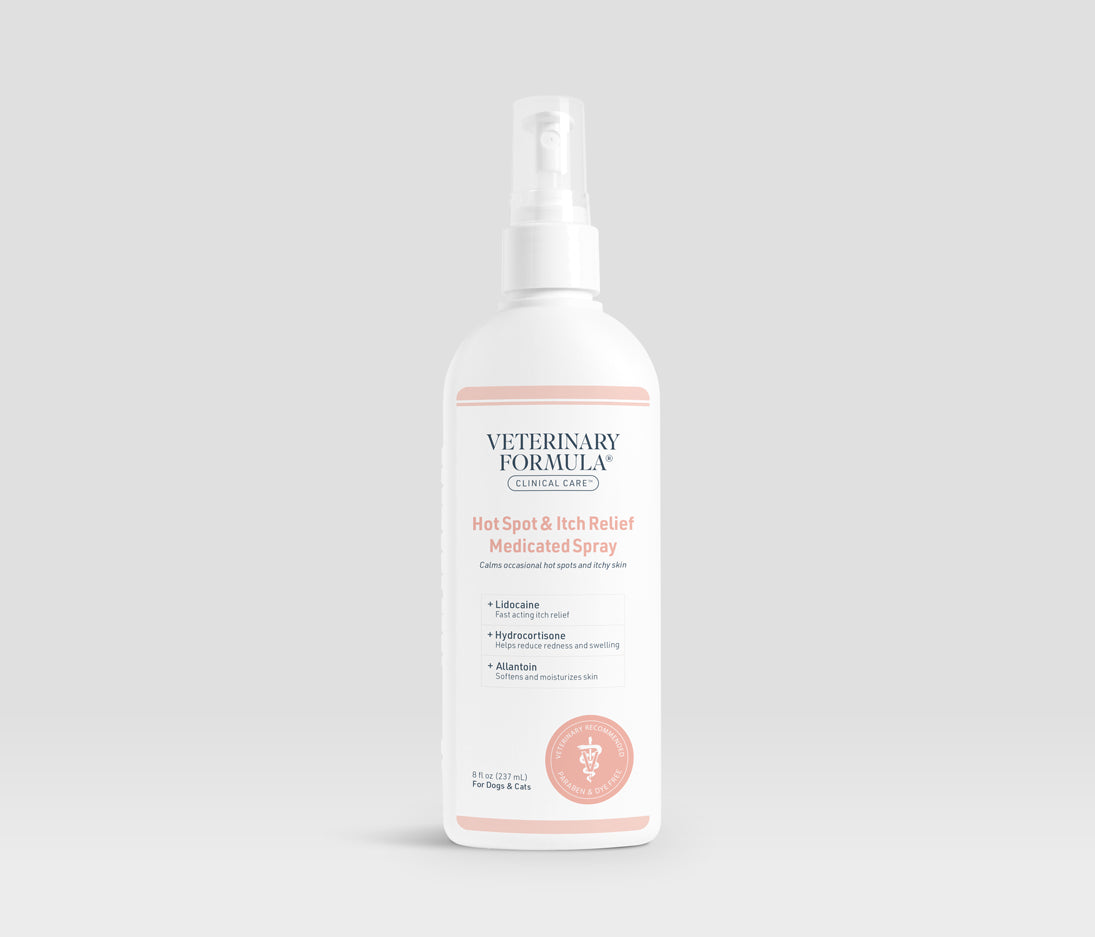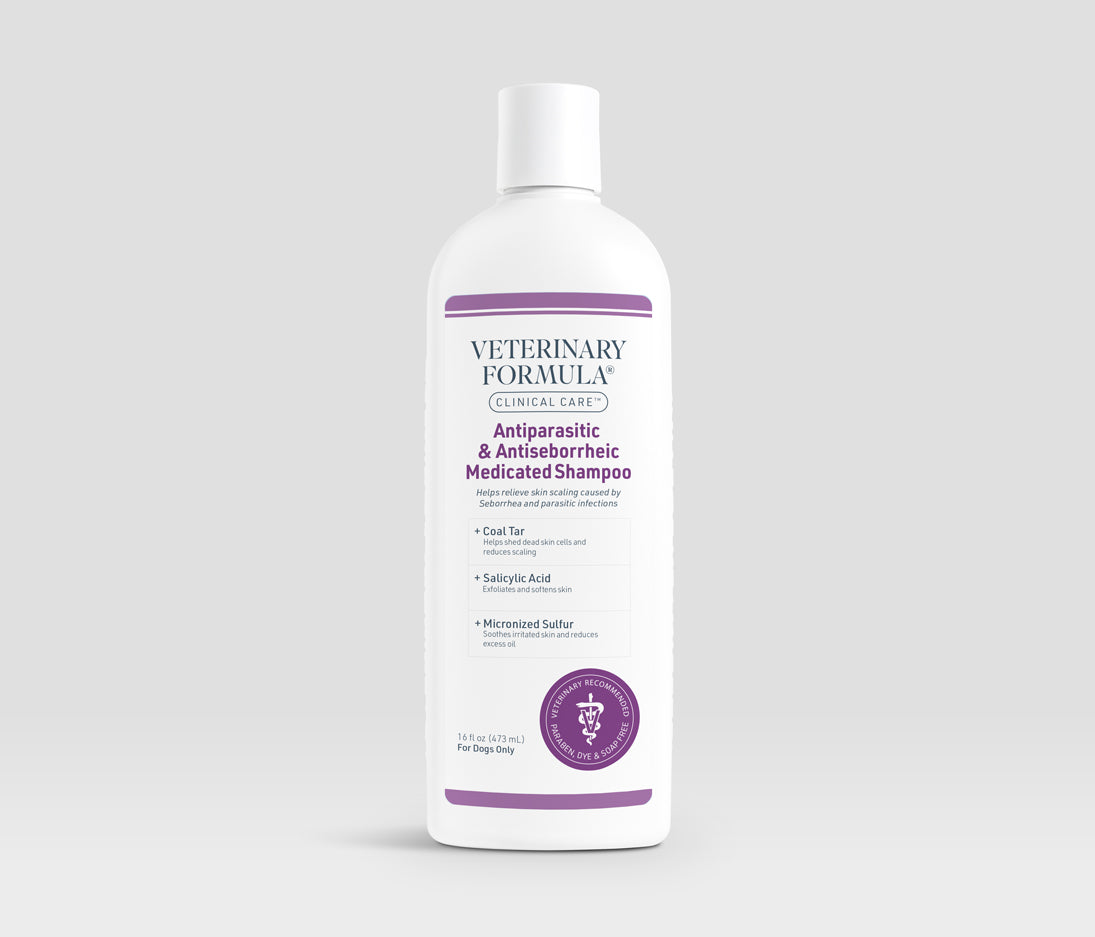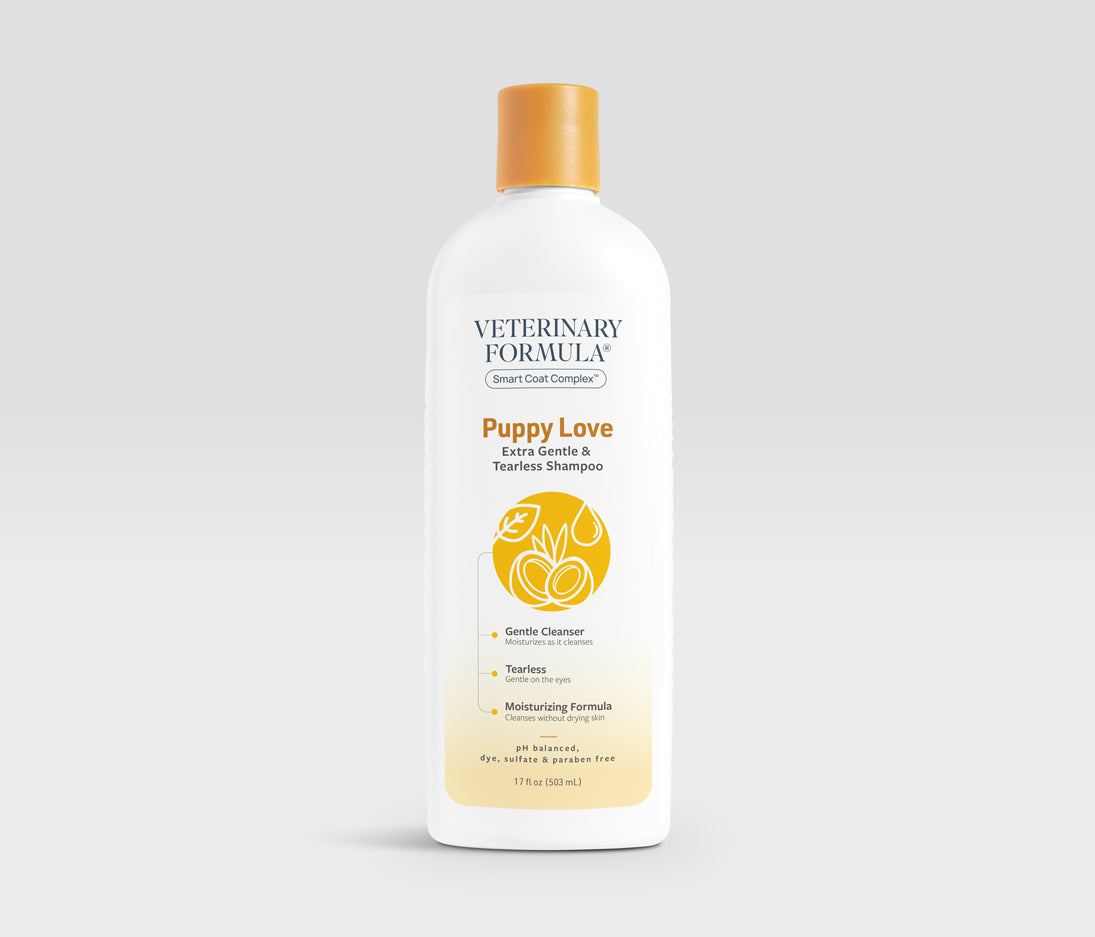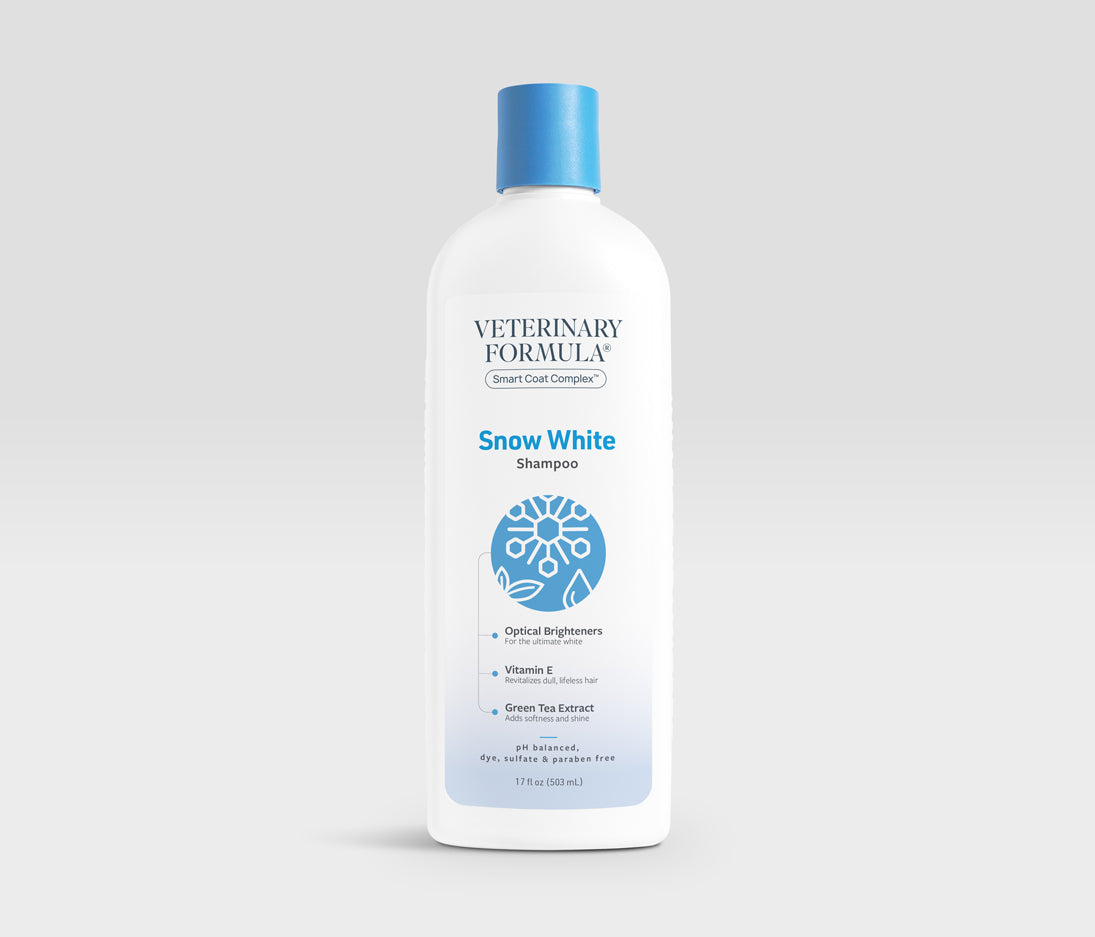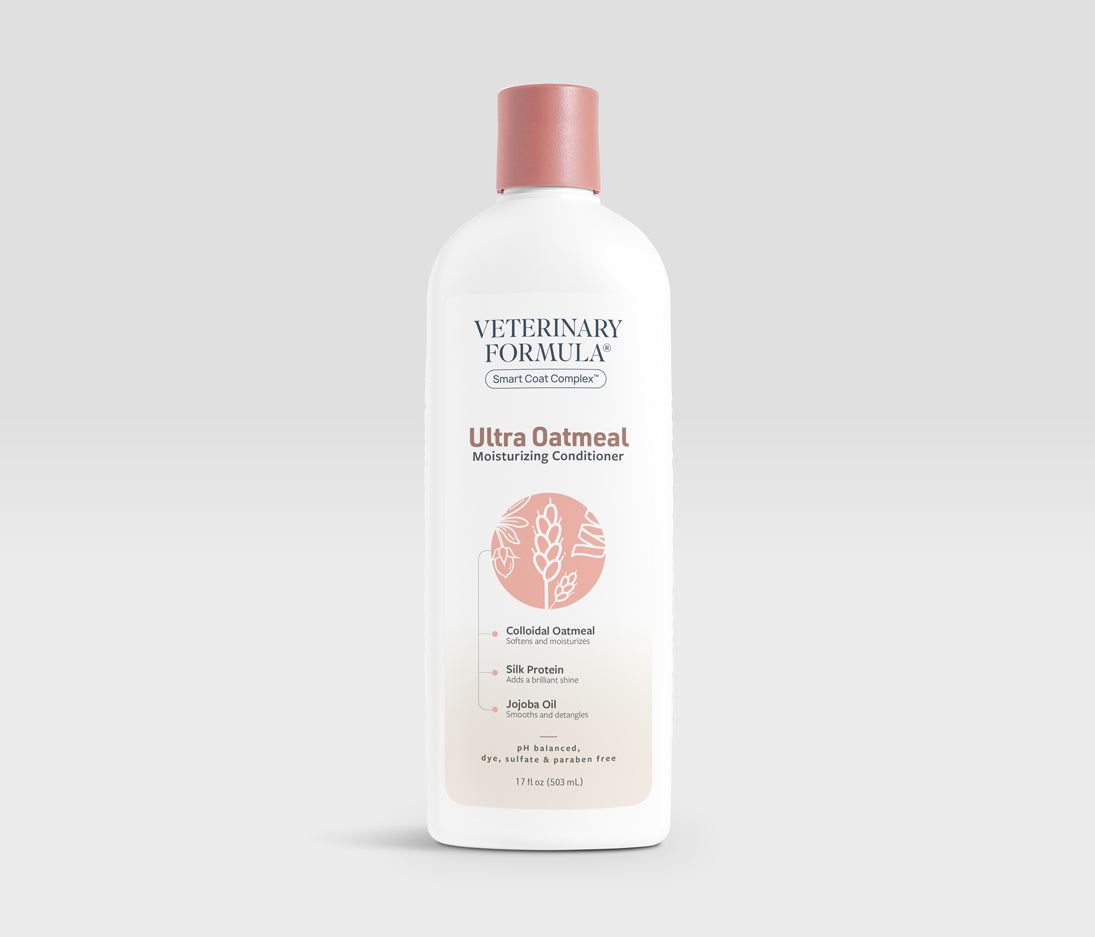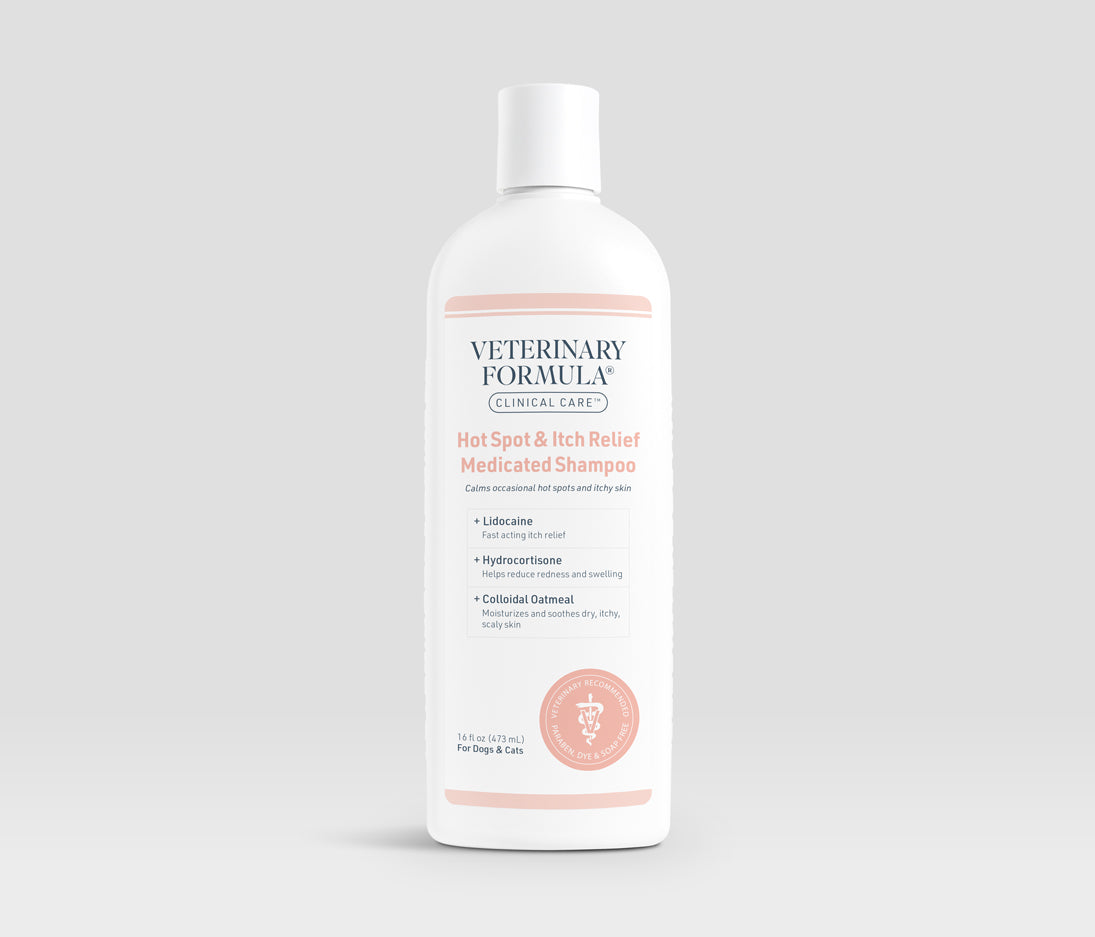Hear the term "dog allergy" and you probably think of someone with an allergy to dogs. But dogs get allergies too. And they can be just as annoying as ours.
Allergies in dogs are commonplace. Some experts estimate as much as up to 50% of all dogs will have allergies at some point in their life. Three groups of allergens comprise the most common dog allergies. Most cause similar symptoms, so it's not always easy to determine what your dog is allergic to.
Here, we've rounded up a list of the most common dog allergies, along with their symptoms.
(This article is for informational purposes only. For an accurate diagnosis of canine allergies, contact your veterinarian if you see any of these symptoms.)
Flea Allergies in Dogs
An allergy to fleas, also known as flea allergy dermatitis (FAD), is the most common allergy in dogs. And, it's on the rise. According to a 2018 State of Pet Health Report from Banfield, flea allergies in dogs have risen by 12.5% over the past 10 years.(FAD is also the most common canine skin disease. See what other common dog skin problems you need to watch out for.)
To be clear, dogs are not allergic to the fleas themselves. It's the flea's saliva they're allergic to. A single bite can set off a severe allergic reaction that can last for weeks.
Fleas are not the only insects your dog may be allergic to. In rarer cases, dogs can also be allergic to bites from spiders, ticks, horseflies, mosquitoes, and ants. And, like humans, they can also be allergic to bee stings.
Symptoms of Flea Allergies in Dogs
If you guessed itchy skin was the number one symptom of flea allergy dermatitis, you'd be correct.Excessive scratching, licking, and biting are key signs your dog may have been bitten by a flea – and is allergic to the bite.
Hair loss, specifically in the triangular area that encompasses the middle of your dog's back to the base of his tail and down his rear legs, is another common sign of flea allergies in dogs.
Secondary signs of a flea allergy can be open sores and scabs (caused by all the scratching and biting). Chances are low of actually spotting a flea. But you may notice flea dirt (usually picked up by a fine-tooth comb run through your dog's fur).
Inhaled Allergies in Dogs
Inhaled allergens (aka atopic allergies) are second on the list of common dog allergies. Reported to affect between 10 and 20% of dogs, atopic dermatitis is caused by an allergic reaction to an inhaled substance, even though, in the vast majority of cases, it presents as skin-related problems.The most common allergens in this group are seasonal pollens (see below), house dust and dust mites, mold, mildew, and tobacco.
Seasonal allergens include tree (cedar, ash, oak), grass, and weed (ragweed) pollens.
Scientists generally believe that atopic dermatitis is an inherited condition. Several breeds are more prone to it than others. These include Golden and Labrador Retrievers, Dalmatian, Shih Tzu, most terriers (Scottish, West Highland, Boston, etc.), Hungarian Vizla, Lhasa Apso, Pug, Boxer, and Shar-Pei.
Atopic dogs also tend to have other allergies. It's not uncommon for an atopic dog to also have a flea or food allergy.
Symptoms of Atopic Allergies in Dogs
Most canine allergies to inhaled substances present as itching, skin irritation and red spots, bald patches, and areas of thickening skin mostly on their paws, armpits, face, and rear end.Ear infections are also a common sign of an atopic allergy, as are skin and anal gland inflammation and infections.
Dogs with atopic allergies will scratch, lick, and chew the affected areas. You may also notice your dog rubbing up against a wall or piece of furniture.
In rarer cases, an allergy to an inhaled substance can present as coughing, sneezing, wheezing, or runny discharge from the eyes or nose.
Food Allergies in Dogs
The third most common allergy in dogs is to food. This type of allergy is also referred to as a cutaneous adverse food reaction (CAFR).According to a study of records done in 2016, the prevalence of CAFR in dogs presented to a veterinarian for any diagnosis was 1 to 2%. In dogs that presented with a skin disease, the percent diagnosed with CAFR ranged from 0 to 24%. In dogs diagnosed with atopic dermatitis, 9 to 50% were also diagnosed with a food allergy.
A study by BMC Veterinary Research found that between the years of 1985 and 2015 the most common food allergens for dogs were: beef, dairy products, chicken, wheat, and lamb.
Less commonly reported food allergies included those to soy, corn, eggs, pork, fish, and rice.
Symptoms of Food Allergies in Dogs
Food allergies can present either (or both) as skin conditions or gastrointestinal issues.Most of the skin conditions you'll see in a dog with food allergies are the same as those you'll see in atopic dogs. These include excessive scratching and itchy paws, hot spots, skin rashes or bald patches, and ear infections.
Other skin-related signs of a food allergy in dogs are scaly or leathery skin, eye discharge and tear stains, and red eyes. Sneezing is also a possibility.
In the 2019 article "Diagnosis and Management of Food Allergies in Dogs and Cats," researchers revealed that the most common spots for food allergy-related itchiness to occur are on the feet, ears, face (muzzle and chin), and groin.
Up to 30% of dogs with food allergies have gastrointestinal symptoms, namely diarrhea and vomiting.
Often, dogs will display a combination of all of the above.
How to Treat Dog Allergies
If you've ever sneezed your way through a spring or fall allergy season, you know how miserable having allergies can be. It's no different for your dog. And it's not only the allergic reaction making life miserable. Painful sores, hot spots, and infections are possible side effects of your dog's allergies.Allergy relief for dogs can be as easy as giving them an anti-inflammatory or antihistamine. Corticosteroids may be prescribed by your veterinarian or you can try a natural anti-inflammatory supplement.
Specially-formulated shampoos, like Hot Spot & Itch Relief Medicated Shampoo from Veterinary Formula Clinical Care or Oatmeal Itch Relief Shampoo from WoofWash, can help reduce itchiness. In the case of inhaled allergens, like dust or pollen, baths also rinse these irritants out of your dog's fur so there's less exposure.
Treatment is more limited for dogs with food allergies. In most cases, the only solution is to eliminate the allergen from their diet. This usually requires a long process of determining which food is the cause of the allergy. This can only be done through elimination diet trials and must be overseen by a veterinarian. Each trial period can take eight to 12 weeks.